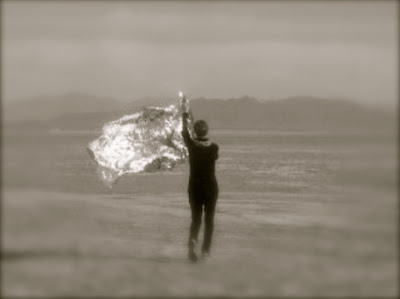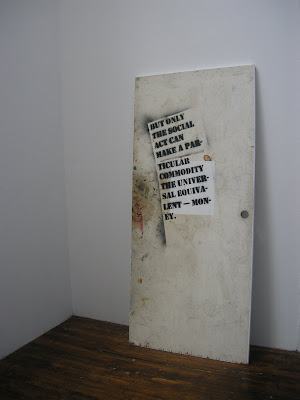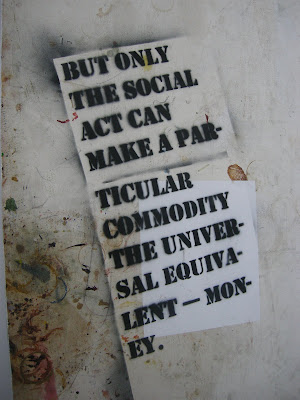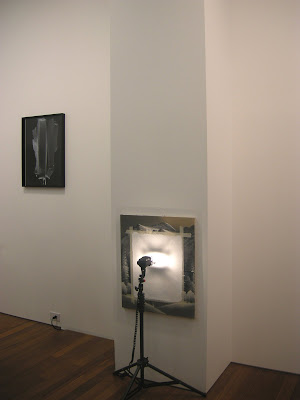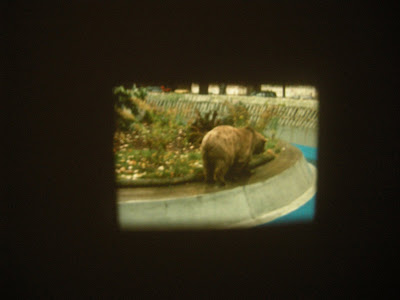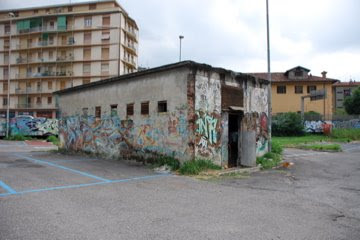whitehot | September 2008, BAD MOON RISING Special curated by Jan Van WoenselBAD MOON RISING Special
Curated by Jan Van Woensel
Artists:
Vanessa Albury / Diana Artus / Richard Ashcroft / Elena Bajo / Kelie Bowman / Greggory Bradford / Olaf Breuning / Bettina Cohnen / Body Count / Emily Coxe / James De La Vega / Liam Everett / Lonnie Frisbee & David di Sabatino / Tony Garifalakis / Charlie Halsey / George Hennard / Annegret Hoch / Pamela Jue / Paulus Kapteyn / Richard Kern / David Matorin / Clayton Patterson / Job Piston / Luther Price / Lee Ranaldo / Max Razdow / Yoji Sakate / Jan Serych / Marie Snauwaert / Philippe Vandenberg
Music:
Glass Ghost http://www.myspace.com/glass1ghost
Friday September 12, 2008
ISCP: 1040 Metropolitan Ave
Brooklyn, NY 11211
http://www.iscp-nyc.org
 Erased Charlie, Elena Bajo erasing Charlie Halsey’s graffiti (After Robert
Erased Charlie, Elena Bajo erasing Charlie Halsey’s graffiti (After Robert
Rauschenberg’s ‘Erased De Kooning’), Live Action, Bad Moon Rising
Special, curated by Jan Van Woensel, New York 2008Review by Matthew Ladd
On September 13th, the vigorous and ecumenical talents of independent curator Jan Van Woensel brought BAD MOON RISING Special to Brooklyn’s ISCP (International Studio and Curatorial Program), a one-night exhibition of works that ran the gauntlet from painting to collage to installation, video, and graffiti. The ISCP’s narrow warren of gallery spaces—carved out of a former warehouse—proved a decisive advantage for such an eclectic show; each room seemed a gallery complete in itself, and those who were intent on, say, Philippe Vandenberg’s small cluster of quietly disruptive paintings (think Francis Bacon in miniature) didn’t seem bothered by the live music down the hallway.
Incidentally, the musicians included Lee Ranaldo (who generally plays as loud as he wants). So it’s worth mentioning that BAD MOON RISING is the name of Sonic Youth’s second studio album. Of course, it’s also the name of that Creedence Clearwater Revival song in which John Fogerty warns us that the entire country is about to go to hell. All of this may or may not matter. Suffice it to say that a song about anxiety—that creepy feeling that whatever’s about to happen, it won’t be pretty—is as fitting as any for a show whose works included, among others, a line of gleaming rifle cartridges and a painting of a man getting strangled by a giant rabbit.
The graffiti performance, which took place outside, offered a surprisingly serene approach to the works in the ISCP gallery proper. Charlie Halsey, the artist, spent roughly an hour spraying a bright geometrical design onto a large slab of plywood, and swaddled it in a cartoonish white cloud, eventually stepped back and walked away. A few minutes later, artist Elena Bajo approached and within ten minutes had erased half of the piece with a roller soaked in gray paint. It was painful to watch. But the strokes with the roller seemed methodical, almost thoughtful, as if erasing the piece were just as important as creating it.Inside, the intensity grew. Tony Garifalakis’s stark, glittering lineup of rifle cartridges, each etched with a single letter, gradually spelled out the famous statement “THAT WHICH DOES NOT KILL ME MAKES ME STRONGER,” transforming cliché into an effective (and effectively troubling) fusion of irony and sincerity. In this context (as in Nietzsche’s Twilight of the Idols, where it originally appeared) it was a sentence whose tone one simply could not pin down.
Van Woensel exhibited one of the most powerful pieces right on top of two of Garifalakis’s poster works: a small Gregory Crewdson-esque photograph by the Swiss photographer Olaf Breuning, which captured a delightfully surreal mise-en-scene of sweaty rednecks, black-denim-clad hipsters, dancers in waist-high pantyhose and face paint, an obese man in a green sweater (his head swallowed by an oversized rubber alien mask), and a few ragged children who looked like they’d just wandered off the set of The Grapes of Wrath, everyone slouching on cinder blocks or leaning up against corrugated aluminum walls like a post-apocalyptic circus troupe waiting for the bus. The photograph was set in a background of painted black paper, isolating it, as it seemed to demand.
No less surreal was Luther Price’s silent video projection, a montage of black-and-white footage that, one can only guess, was culled from the dustbins of a 1950’s B-movie soft-core studio. The projection chiefly featured a wasted Bettie Page look-alike, possibly transsexual, in various states of undress, lounging on a floral bedspread, turning to the camera with an expression of bland shock, as if rehearsing a particularly titillating—or violent—scene. Price’s video tended to veer toward the sort of faux-vintage footage that always seems to be playing behind the band at punk shows: white-faced actors scurrying like insects around the set, the camera’s foggy fish-eye. But it maintained an edge.
The exhibition was not all edge, of course. A subtler investigation of anxiety came in the form of Marie Snauwaert’s glossy photographs of women posing in wedding dresses. ‘Posing’ may not be quite the right word: Snauwaert’s brides were remarkably plain looking, the glare of the camera catching every wrinkle and vein. A few of the women frowned or scowled; others appeared merely uncertain. Most were middle-aged. Snauwaert’s take on the marriage institution may not have been overtly subversive—it didn’t seem to argue that getting married is any worse than not—but it was honest and sophisticated.
More risky was Lee Ranaldo’s installation “Paperbox,” which occupied most of the vestibule at the gallery entrance. I’m inclined to think that the piece couldn’t have worked as well on its own: the galleries of well-intentioned curators are stocked with pieces on 9/11, most of them either driven by angry political screeching or (decidedly worse) a desire to console or forgive. But “Paperbox,” a series of floor-to-ceiling columns of painted text in which the artist recalled the weeks surrounding 9/11, tried for neither and therefore succeeded. For all the contrast of cramped black words on white walls, it was a quiet piece, and every time this reviewer walked through the vestibule, there was another cluster of people reading the whole thing from start to finish. It wasn’t redemptive—who in his right mind expects good art to redeem? Its popularity at BAD MOON RISING, however, supported the notion that, as we live in an increasingly anxious age, we’re frequently drawn to art that manages, regardless of its medium, to reflect that feeling in a form that we can recognize.
Curated by Jan Van Woensel, Bad Moon Rising is an ongoing project launched at Silverman Gallery, San Francisco in December 2007. The project Bad Moon Rising Special was a one night only event organized in the framework of ISCP’s Picture Parlor series. Bad Moon Rising 3 will open in January 2009 at Boots Contemporary Art Space in St. Louis, MO.
Matthew Ladd graduated from the University of Cambridge in 2004 with an MPhil in Divinity. He has since taught classes at the University of Florida and the Columbus College of Art and Design, and he has written for such journals as The American Scholar, The Humanist and Berkeley's Threepenny Review. He lives and works in Brooklyn. mattrladd@gmail.com
NEITHER HERE OR ELSEWHERE, PEEKSKILLS, NEW YORK, 2008
Neither here or elsewhere
This landscape intervention consists in the creation of ‘a garden of displaced weeds’, by transplanting a number of weeds within an area located in an ecotone, an ecological term that defines a space between two different ecosystems, the forest and the lawn in this case, a place where ecologies are in tension, frequented by a growing number of deers, who graze the area intensively. The term ‘weeds’ in its general sense is a subjective one, without any classification value, since a "weed" is not a weed when growing where it belongs or is wanted. In a historical moment characterized overwhelmingly by war, forced displacement, and environmental
devastation, the creation of an area of possible disruption might pinpoint the social, economical and political factors that produce these conditions. This ambiguous gesture highlights an illogical situation that might suggest a platform for reflexion.
‘Neither here or elsewhere’ was the slogan used in one of the largest demonstration in Europe, the 30th of November 2002, against the centro di permanenza temporanea (migrants detention centre) on Corso Brunelleschi in Torino. This protest was conducted under the slogan ‘Né qui, né altrove’ (Neither here, nor elsewhere), indicating that the protest was a matter of principle, a stance against the system of detention as such and not just against one particular centre. By reivindicating the creation of a ‘common’ territory, in which non-native species can proliferate, this action becomes ‘a right of resistance’, where Paolo Virno’s in his book ‘The Grammar of the Multitude’ defines as a practice belonging to a community assembled to defend either certain elements in common or its existence as such from attack by a centralized power. Resistance against the effort to control the migrants mobility, which has become the motor of the capitalist system and the contemporary detention centre appears as one in a long line of administrative mechanisms that function to this end. ‘Neither here, nor elsewhere’, registers the importance of local mobilizations, but it also signals the necessity to open such struggles to the global dimension.
 Project DoDai at Galerija Škuc, Ljubljana
Project DoDai at Galerija Škuc, LjubljanaProject conceived and coordinated by BridA (Sendi Mango, Tom Kerševan, Jurij Pavlica) Cesare Pietroiusti & Alenka Gregorič.
Artists: Elena Bajo, Dafne Boggeri, BridA (Sendi Mango, Tom Keršvan, Jurij Pavlica), Morwenna Catt / Duncan Burnett, Beatrice Crastini, Vuk Ćosić, Emilio Fantin, Dušan Kirbiš, Warren Neidich, Luigi Negro, Sally Noall, Giancarlo Norese, Slobodan Peladić, Cesare Pietroiusti, Therese Sunngren, Miha Štrukelj, Giorgio Valvassori and Marcela Vanzo.
The project runs from December 17, 2008 to January 13, 2009 at Galerija Škuc and you can also contribute to the project at http://www.brida.si.



Irrespective of the hysteria of the last few months of the financial crisis, which is imbuing all pores of economic, political and social life, of all the guessing about how the situation which has arisen is going to impact upon the different spheres of our lives, the present exhibition provides, when speaking about art and its market orientation in the Slovenian space, the résumé, respectively, the result of the confrontation of the views of the various actors within the domain of contemporary art and its market orientation - a pressing theme also within the local space during the last few years. We have initiated the creation of the project together with the artists of the BridA group (Sendi Mango, Tom Kerševan, and Jurij Pavlica) about a year ago; however, the initial steps of the project were aiming at completely different goals. Our discussions, in which the artist of Italian origin, Cesare Pietroiusti, has been taking part upon the ulterior invitation of the artist, were most frequently focused in particular at questions focused on the marketing of the contemporary art, the advantages and weaknesses generated by the latter, and where Slovenian art has been located in this context.
In particular, the view from outside, where we can expose the point of view of Pietroiusti in the actual communication, who not only is not acquainted with the specificities of the Slovenian (non-)market of contemporary art, but is so much more acquainted with the specificities of the far more advanced Italian market, and whose practice is founded just on anti-marketing oriented artistic production, has well installed the course and implementation of the exhibit project DoDai - Add. First of all, the discussions generated questions about so-called "art" tourism, the production mechanisms, as well as the positive and negative market outcomes concerning contemporary art. We have established parallels between great international manifestations of contemporary art – biennale, triennial, document (“grand tour” - from Venice via Muenster and Kassel to Basel) to the juxta-position with art fairs, which (at least some of them) strongly parry to the spectacle of the large non-market manifestations of contemporary art. We have not searched for great answers with which we could draw a conclusion and write down what is right and what is wrong, better or worse, more or less harmful, authentically binding for contemporary art’s production. Just the opposite, the answers have launched new questions and dilemmas, which have not however been presenting any novelty in the local environment, and even less in the international environment.
Likewise the question of audience, respectively the general public, played an important part in the creation of the exhibition project, that is, the part of the system which should present to every acting subject in the public sphere one of the most important articles of our activity. If the general public does not play an important part, then we should ask ourselves why should we act in public, why should we spend public financial assets, and why should we conduct our activities in public premises? Nevertheless, the most important audience of contemporary art is the general public, who are being encouraged by artists through their works and using the means of various artistic methods and practices, to reflect, respectively, confront everyday routine. If this factor is not in the forefront of the activities of a contemporary art public institution, then quite soon we can approach the logics of commercial galleries, whose principal motivational power is capital in the hands of a handful of individuals who provide for the survival of these premises.
For some people the presentation, assuming the image of a public gallery presentation, is rather simple, perhaps even naive and non-spectacular. And this is just about it. We did not wish the seeming spectacle, which should dictate answers to pressing issues, but we were searching for the way in which we could address, respectively, encourage the general public in the best possible manner to take an active part in the project via the internet, by visiting galleries, thus contributing through the means of such general public engagement to the designed final form.
For this reason the artists of the BridA group and Cesare Pietroiusti invited about twenty artists from different countries who they have made friends with, respectively, whose artistic work they are acquainted with and respect, and consequently wish to present to the general public. For this reason the exhibited works have no conceptual framework through which we could expose questions or theses; there is only one moment uniting these works – the works in the gallery as those contained in the website are waiting for the audience to respond with comments, interpretation, critique, or any other personal effusion. There is no financial reward for writing, yet there is a possibility that the artist either from enthusiasm, or from any other personal impulse, will gift his work to the writer of text, who according to his opinion will touch the core of his work. The social capital of an individual is the only component by means of which the project operates, since it is going to be a guideline for the possibility of possessing the artistic work presented in the gallery. The writer of the best texts following the judgment of the artists, the majority of whom will participate in the closing event, will be gifted with the works of artists without ceremonies and speeches on the last day of the exhibition.
The decision, however, is the exclusive right of the artist and therefore the works might not pass to another owner and will return to the artist's ateliers, cabinets, shelves, hard discs, etc.
Project is supported by Ministry of Culture of the Republic of Slovenia and Cultural Department of the City of Ljubljana.
For further information contact Alenka Gregorič on + 386 1 251 65 40 or galerija.skuc@guest.arnes.si.
LOST IN YOUR EYES,
curated by Jon Cuyson and Dominic Mangiela LeRoy Neiman Gallery, Columbia UniversityExhibition: November 23 - December 13
The participating artists in the New York exhibition are:
Mayen Alcantara, Brandon Alvendia, Kate Bae, Camille Bailey, Elena Bajo, Michael Berryhill, Christi Birchfield, Ayla Bonfiglio, Byoungdu Choi, Shenjuti Chowdhury, Ernest Concepcion, Ellissa Corwin, Jennifer Covarrubias, Grayson Cox, Jon Cuyson, Arvin Flores, Read Flusser, Michael Gaillard, Eric Guerrero, Jose Guinto, Robert Gutierrez, Josephine Halvorson, Ann Marie Heal, Rafael Laurel, Jing Liu, Dominic Mangila, Abbie Manock, Teruyuki Matsuyama, Rita Mercedes, Maceo Montoya, Murad Mumtaz, John Orthwein, Jeana Poindexter, Alyssa Phoebus, Chaenee Rhee, Daniela Rivera, Ivan Sarenas, Ivor Shearer, Annie Shaw, Emily Mae Smith, Jomar Statkun, Paolo Vinluan, Mark Wade, Jessie Weiss, Nate Wolf
Lost In Your Eyes is a collaborative exhibition that aims to comment on how authorship, mutability, subjectivity and fabrication destabilize simple representation, allowing fiction to take on the appearance of fact and vice versa. The exhibition title Lost In Your Eyes is the title of a famous 80's pop song and it can also allude to a state of being when one is open to the possibilities for the creation of alternative thinking and communication. Paul Pfeiffer, Manuel Ocampo and David Medalla were invited by Jon Cuyson and Dominic Mangila to participate in this three-part traveling exhibition wherein each artist were asked to send an image, idea or an actual object that would serve as the point of entry for the curatorial direction of the exhibition. The curators then invited artists to respond to the developed ideas allowing the context of their presentations of their responses to become the explicit subject.
The accumulated works in the New York exhibition will travel to London and then Manila to interact with another group of artists who were invited to make works in response to the concepts sent by the three main artists whilst considering the works presented in New York. The resulting works from this process of regeneration and repetition will be compiled and documented which will then be presented as an artist's book, produced at the LeRoy Neiman Center for Print Studies





